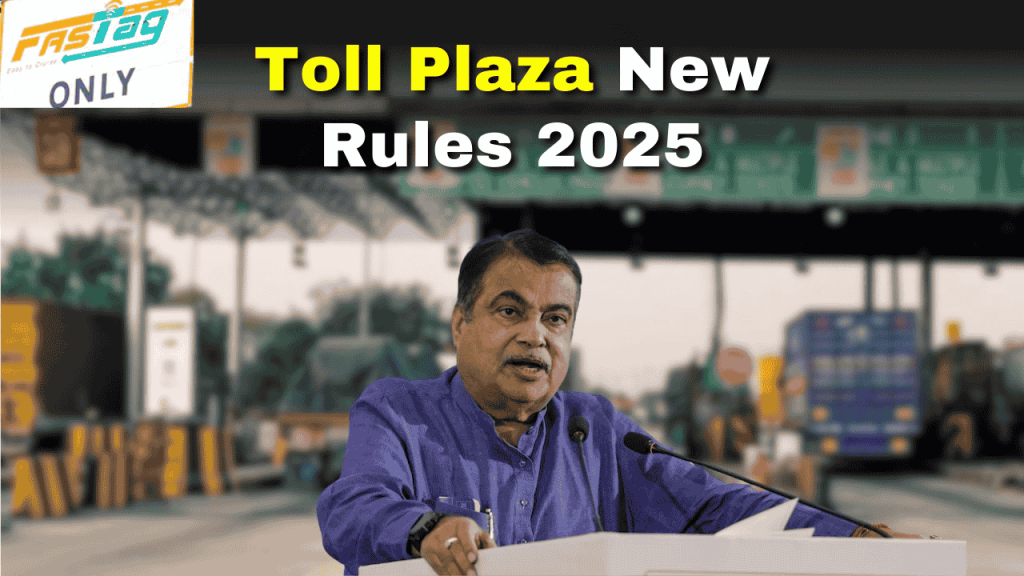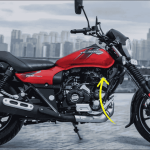
India’s toll collection system is undergoing its most significant transformation since the introduction of FASTag, with revolutionary changes set to reshape how millions of commuters experience highway travel. Starting May 2025, the National Highways Authority of India (NHAI) will implement a series of major reforms designed to streamline toll collection, reduce congestion, and offer more economical options for regular travelers. These changes will affect everything from the technology used for toll collection to payment options and special passes available to commuters.
GPS-Based Toll Collection System: The End of Toll Plazas
The most dramatic change coming to India’s highways is the shift from the current FASTag system to an advanced GPS-based toll collection technology. This transformative approach will fundamentally alter how tolls are calculated and collected.
Timeline and Implementation
| Phase | Timeline | Description |
|---|---|---|
| Pilot Testing | April 16-17, 2025 | Initial testing on select highways |
| Official Launch | May 1, 2025 | Full-scale implementation begins |
| Transition Period | May-December 2025 | Both systems will operate simultaneously |
| Complete Migration | By 2027 | Coverage of 50,000 km of highways |
The new GPS-based toll system uses satellite navigation to track vehicles and calculate toll fees based on the actual distance traveled. Unlike the current system where tolls are collected at fixed points regardless of how much of the highway is used, the GPS system will charge users proportionally to their actual usage.
How the New System Works
- Vehicle Tracking: Vehicles will be equipped with On-Board Units (OBUs) that communicate with satellites to monitor their movement on highways.
- Distance-Based Calculation: The system calculates toll charges based on the precise distance traveled on toll roads.
- Automatic Deduction: Fees are automatically deducted from the user’s linked account or FASTag balance.
- No Physical Barriers: The most noticeable change for drivers will be the gradual elimination of physical toll plazas, allowing for uninterrupted travel.
According to the Ministry of Road Transport and Highways, “Only minimal and essential location data will be used for tolling purposes and will not be shared without consent,” addressing privacy concerns that have been raised about the new system.
Annual and Lifetime Pass Options
In a move that promises substantial savings for regular highway users, the government is introducing fixed-price passes that allow unlimited travel.
Pass Types and Pricing
| Pass Type | Cost | Validity | Coverage |
|---|---|---|---|
| Annual Pass | ₹3,000 | 1 year | All national highways |
| Lifetime Pass | ₹30,000 | 15 years | All national highways |
| Monthly Pass | ₹340 | 1 month | Specific toll plaza |
The Annual Pass represents significant savings compared to the current monthly pass system, which costs approximately ₹4,080 per year. These passes will work with the existing FASTag infrastructure, requiring no additional purchases or devices.
Eligibility and Restrictions
- These passes are primarily designed for private vehicles
- Commercial vehicles like trucks and buses may have different pass structures
- For the Annual Pass, the validity begins from the date of purchase
- The Lifetime Pass is linked to the vehicle, not the owner, and is non-transferable if the vehicle is sold
“The Annual Toll Pass is a prepaid subscription model introduced by the NHAI for private light motor vehicles. This scheme is designed for individuals who frequently travel on specific toll plaza or highway stretches,” notes an official NHAI statement.
New FASTag Rules and Changes
While the transition to the GPS system progresses, several important updates to the existing FASTag system will take effect immediately.
Key FASTag Updates for 2025
- Blacklisting Protocol: If a FASTag is blacklisted at least 10 minutes before reaching a toll plaza, the transaction will be declined. Users may face double toll charges unless they recharge within 10 minutes of scanning.
- Grace Period: FASTag users are granted a 70-minute grace period to rectify their tag status before crossing a toll booth.
- Waiting Time Rule: According to NHAI’s new criteria, the wait time at toll plazas cannot exceed 10 seconds. If a driver waits for more than 10 seconds, no toll charge will be applied.
- Vehicle Queue Limit: The maximum length of vehicle queues at toll plazas cannot exceed 100 meters. Yellow lines will be placed at this distance to demarcate toll lanes.
- One Vehicle, One FASTag: Each vehicle can only use one FASTag, which is linked to the vehicle’s registration number. Using the same FASTag for multiple vehicles will incur penalties.
State-Specific Implementations
Some states are implementing additional rules alongside the national changes. For example, Maharashtra has mandated FASTag at all state toll plazas effective April 1, 2025, with non-FASTag users paying double toll charges.
Benefits for Different Types of Commuters
The impact of these changes will vary depending on how frequently you use highways and your travel patterns.
Daily Commuters
For those who travel on highways daily for work or business, the Annual Pass offers the most significant value. At just ₹3,000 per year, frequent commuters could save thousands compared to paying individual tolls.
Occasional Travelers
Occasional highway users might benefit more from the distance-based GPS system, as they’ll only pay for the exact distance traveled rather than fixed toll amounts that might cover stretches they don’t use.
Long-Distance Travelers
For those who frequently travel long distances across multiple states, the Lifetime Pass at ₹30,000 represents substantial long-term savings, especially considering it covers all national highways for 15 years.
Financial Impact on Commuters
The potential savings from these new systems are considerable:
Annual Savings Comparison
| Commuter Type | Current Annual Cost | New System Cost | Potential Savings |
|---|---|---|---|
| Daily (2 tolls) | ₹14,600-₹29,200 | ₹3,000 | ₹11,600-₹26,200 |
| Weekly (2 tolls) | ₹2,080-₹4,160 | ₹3,000 | Up to ₹1,160 |
| Monthly (2 tolls) | ₹480-₹960 | Pay-per-use GPS | Varies |
For frequent travelers, the Annual Pass system could reduce toll expenses by up to 90%, while the GPS-based distance calculation ensures fairer pricing for all users.
Environmental and Economic Benefits
Beyond the direct benefits to commuters, these changes are expected to have broader positive impacts:
- Reduced Congestion: Eliminating or streamlining toll plazas will significantly reduce traffic bottlenecks.
- Lower Emissions: Less idling at toll plazas means reduced vehicle emissions and improved air quality.
- Fuel Savings: Drivers will save fuel that would otherwise be consumed waiting in toll lines.
- Economic Efficiency: Faster transit times for goods transport could reduce logistics costs across the economy.
Challenges and Concerns
Despite the many benefits, the transition to these new systems presents several challenges:
Technical Implementation
The nationwide deployment of GPS tracking infrastructure is complex and requires coordination between multiple government agencies, private contractors, and technology providers.
Privacy Issues
While the government has addressed data privacy concerns, the system’s reliance on vehicle tracking has raised questions about surveillance and data protection.
Rural Connectivity
Ensuring consistent satellite connectivity in remote areas remains a challenge for the GPS-based system.
Transition Period Management
Managing the simultaneous operation of both FASTag and GPS systems during the transition period will require careful planning to avoid confusion and disruption.
How to Prepare for the New Toll Rules
To make the transition to the new systems as smooth as possible, here are steps commuters can take now:
- Maintain Your FASTag: Keep your FASTag active and properly funded, as it will remain essential during the transition period.
- Check Eligibility: Determine if your travel patterns make you a good candidate for the Annual or Lifetime Pass options.
- Stay Informed: Follow official NHAI communications for updates on implementation timelines and procedures.
- Update Vehicle Registration: Ensure your vehicle registration information is current and accurate, as this will be linked to the new systems.
FAQs About the New Toll Rules
Q: Will I need to remove my FASTag when the GPS system is implemented? A: No, the existing FASTag will remain useful during the transition period and may be integrated with the GPS system for payment processing.
Q: Can I transfer my Lifetime Pass to a new vehicle if I sell my current one? A: According to current guidelines, the Lifetime Pass is tied to the vehicle, not the owner, and cannot be transferred to a new vehicle.
Q: How will the GPS system work if I travel through areas with poor satellite connectivity? A: The system will include backup mechanisms like Automatic Number Plate Recognition (ANPR) cameras to ensure continuous tracking even in areas with connectivity challenges.
Q: Will the Annual Pass work on all highways, including state highways and expressways? A: The primary focus is on national highways, but efforts are underway to include state highways and expressways in the coverage network.
Conclusion
The toll rule changes planned for 2025 represent a significant leap forward in India’s highway infrastructure, promising smoother travel, reduced congestion, and more cost-effective options for commuters. The combination of GPS-based tolling and fixed-price pass options addresses many of the pain points in the current system while laying the groundwork for a more efficient and equitable approach to funding highway maintenance and development.
As these changes roll out starting May 1, 2025, they will fundamentally transform the highway travel experience for millions of Indians, moving the country closer to international best practices in highway management and toll collection. For regular highway users, particularly those who make daily commutes, these changes could bring substantial financial relief while simultaneously improving the travel experience.













